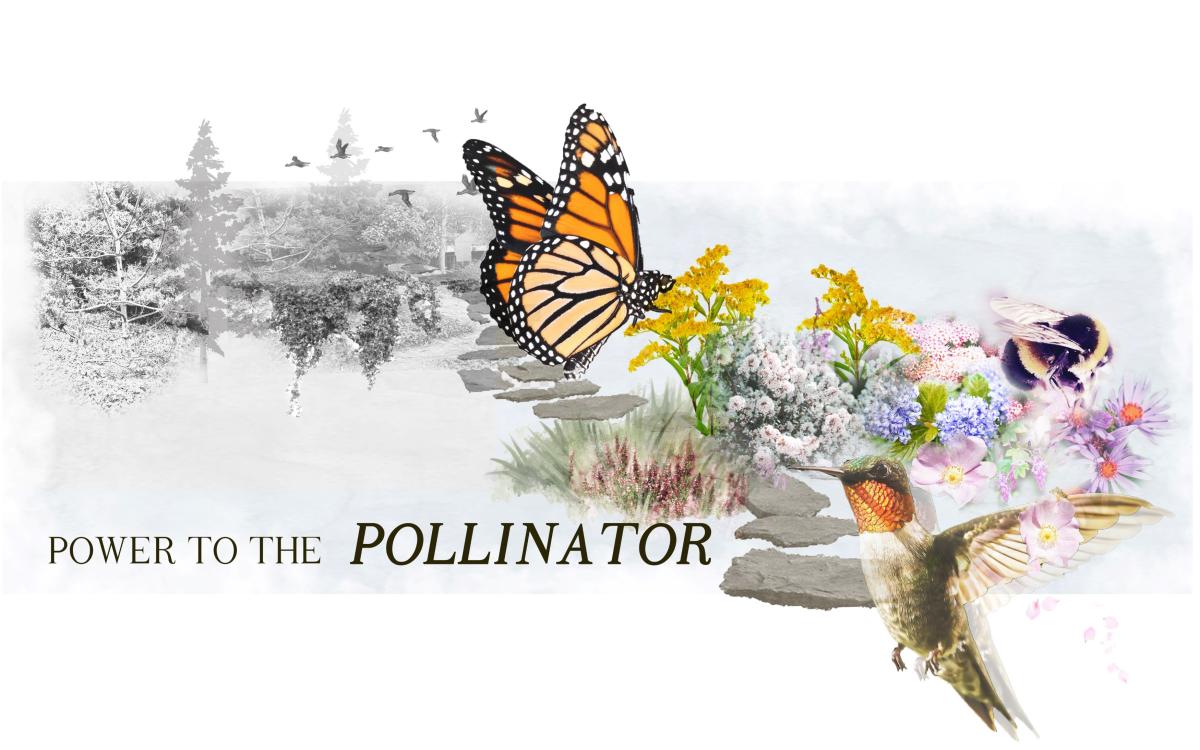At a glance
The Power to the Pollinator Project aims to create a 600 sq. ft. pollinator garden on campus with native plants, shrubs, and… Read full summary
- Funding received
- 2020-2021
- Small
- Awarded
- $1,000
- Funding partners
-
- Services and Activities Fee (SAF)
The Power to the Pollinator Project aims to create a 600 sq. ft. pollinator garden on campus with native plants, shrubs, and shelter to support PNW pollinators like bumble bees, mason bees, and hummingbirds. The garden will provide food and habitat year-round and promote symbiotic relationships between wildlife and microorganisms. Located near Odegaard Library, it will offer students a peaceful space for reflection and ecological study. The project seeks to start a conversation about incorporating ecological diversity into urban spaces and inspire research that unite urban spaces with environmental science, biology, forestry, landscape architecture, art, and engineering.
Over the past few decades, bees and other critical pollinator species have been experiencing a rapid decline in population. Natural ecosystems depend on these critters to pollinate roughly 85% of flowering species, which in turn provide habitat and nourishment for other wildlife. By gathering pollen and nectar from hundreds of flowers, pollinator species like bumble bees, mason bees, hummingbirds, butterflies, and moths help diversify ecological communities and cultivate the lush landscapes that surround our built environments.
To protect these keystone species and encourage low-maintenance, pesticide-free landscapes on campus, I am proposing to construct a 600 square-foot pollinator garden by Odegaard Library and the Henry Art Gallery. Currently an underutilized space covered in invasive English Ivy, the existing site will blossom into one that provides pollinator species like bumble bees, mason bees, butterflies and hummingbirds with a variety of native herbaceous plants, evergreen shrubs and year-round burrowing habitat and refugia. This space will also offer students brief respite from their studies and the opportunity to study ecological systems in nontraditional ways. By establishing a site with a range of native plant species, native pollinators will have a diverse food bank extending from February to October with places to overwinter and burrow. Long-term symbiotic relationships between invertebrates, plants and other wildlife species will also develop as the plants mature.
UW currently lacks a unified, ecologically-based landscape plan, and it is my goal with this pollinator project to kickstart a dialogue on the role of diverse ecology within urban spaces. By marrying our current ecological needs with the built environment, a pollinator garden near the heart of campus will testify to the importance of design activism, educate my peers about the potential relationship between cities and native ecosystems, and spark research opportunities that blend urban spaces with environmental science, plant biology and identification, forestry, landscape architecture, art and engineering.
To start my process, I have begun collaborating with the Society of Ecological Restoration to create a long-term maintenance plan, collect native plants from the SER nursery, and recruit volunteers for the construction and planting phase. A team composed of UW grounds crew members, the UW Integrated Pest Management manager, and a Ph.D. student studying pollinator ecology is helping me conduct site analysis, remove invasive ivy, and plan for maturity. As an undergraduate student in the landscape architecture department, my professor and mentor Daniel Winterbottom will be helping me locate materials for this project, and, lastly, I have recruited a group of my peers from the College of Built Environments to assist with the design and construction phase.
Through September of this year, I will be removing invasive ivy and excavating several inches of existing dirt to make room for fresh soil. Through mid-September to late October, I will be narrowing down my plant palette to a condensed list of native species based on growth characteristics, bloom period, seasonal changes and aesthetics. Within this time frame, I will also be installing materials like landscaping rocks, organic soil, and stepping-stones for a low-maintenance foot trail through the western side of the site. Within mid to late October, I will install the shrubs and herbaceous species before adding a layer of mulch and salvaged coarse woody debris to retain nutrients and provide shelter for the pollinators (see page 2 in Pollinator Outline PDF for detailed timeline).
After the installation phase, I will be scheduling routine maintenance check-ups with UW grounds crew and UW SER volunteers to ensure that the plants are regularly watered, trimmed, and protected from invasive species for a 2-year period. As I extend this concept to a greater scale, my colleague and UW SER president, Nikoli Stevens, and I will be identifying additional spots throughout the UW campus that can expand this solitary garden into a connected wildlife network that relies on little to no maintenance or pesticide-use. This project will continue to be rooted in knowledge from an interdisciplinary team of ecologists, designers, and scientists who will help inspire conservation practices across several fields and provide my peers with the stepping stones to become agents of socioecological change.
As a tangible expression of my commitment to environmental stewardship, this project will allow me to cultivate a shared appreciation for native microecosystems and create spaces that invigorate, delight, and heal the UW community. And it is my goal through this project to motivate my peers to become environmental leaders, eager to establish a more balanced relationship between the urbanizing and the natural world.
Budget estimate:
- Shrubs + Herbaceous Plants: $400 ( SER Nursery)
- Organic Soil: $220 (6 cb yd, $35.5/cb yd from Cedar Grove)
- Landscaping Rocks: $150 (from Dirt Exchange)
- Educational Plaque: $150
*see detailed budget for breakdown of expenses
Daniella Slowik
Project lead
- dslowik@uw.edu
- Affiliation
- Student
Vanessa Lee
Team member
- vnL2@uw.edu
- Affiliation
- Staff
